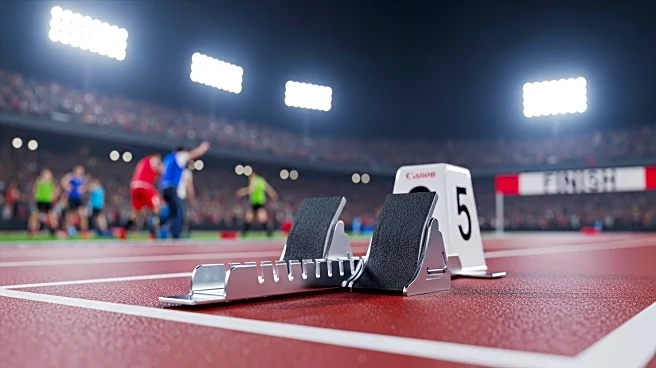What's Happening?
Sydney McLaughlin-Levrone achieved a significant milestone by winning her first world title in the flat 400m, clocking 47.78 seconds in Tokyo. This performance is the second-fastest time in history, closely trailing the world record of 47.60 set by Marita Koch in 1985. McLaughlin-Levrone, known for her success in the 400m hurdles, has now become the first athlete to win world titles in both one-lap events. Her decision to compete in the flat 400m was driven by a desire for new challenges after dominating the hurdles. Despite doubts from some quarters, she broke the American record in the semifinals with a time of 48.29, further improving to 47.78 in the final.
Why It's Important?
McLaughlin-Levrone's victory and near-record performance highlight her versatility and potential to redefine sprinting standards. Her success in both the hurdles and flat 400m positions her as a formidable athlete in track and field, potentially influencing future event strategies and training methodologies. This achievement may inspire other athletes to diversify their event participation, impacting the competitive landscape. Additionally, her performance could attract increased attention and investment in women's athletics, promoting gender equality in sports.
What's Next?
While McLaughlin-Levrone has not announced her plans for the 2028 Los Angeles Olympics, she has expressed interest in competing in both the flat 400m and 400m hurdles at future championships. This decision will require careful scheduling and preparation to ensure peak performance across events. Her coach, Bobby Kersee, emphasizes the need to 'earn the belt,' suggesting a focus on maintaining competitive edge and readiness. The track and field community will closely watch her next moves, anticipating potential record-breaking performances.
Beyond the Headlines
McLaughlin-Levrone's achievements may prompt discussions on the historical context of sprinting records, particularly those set during periods of doping suspicions. Her clean and exceptional performances could serve as a benchmark for evaluating past records and the evolution of athletic standards. Furthermore, her success may influence cultural perceptions of female athletes, encouraging broader support and recognition of their capabilities.











